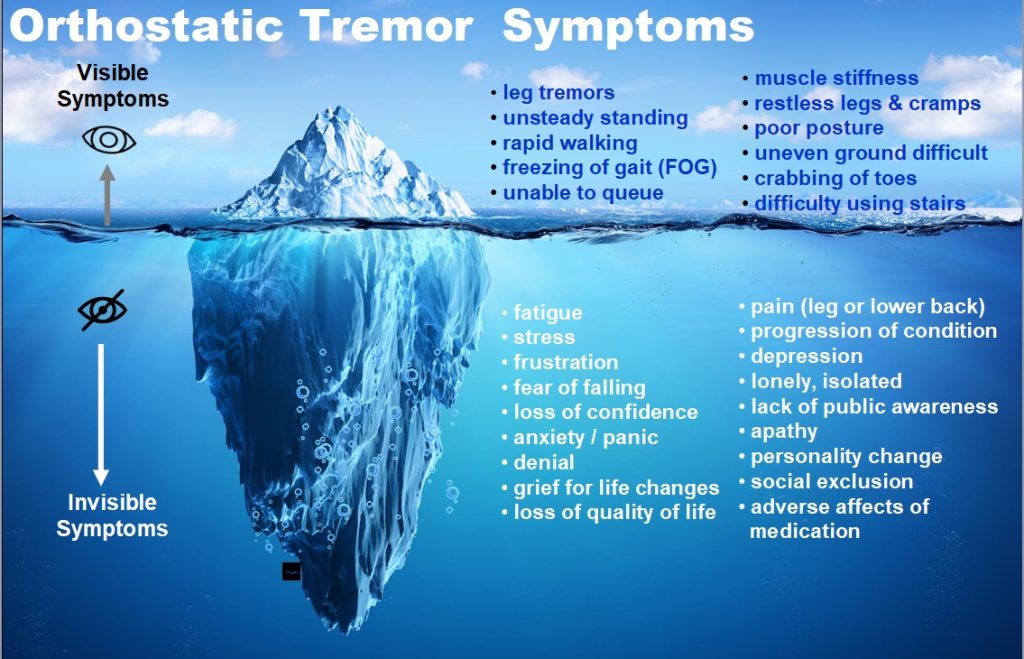Symptoms of Orthostatic Tremor

These may include:
- Inability to stand unsupported incurring an inner leg tremor e.g.: while queuing, maintaining an upright posture during social occasions, waiting for a lift or to cross a busy road, even taking a shower, or difficulty in dressing.
- Unsteady, uncoordinated walking.
- Rapid, direct walking from A to B.
- Gait freezing, characterised by the sudden inability to step forward.
- Curling under of toes, predominately on one side.
- Instability in descending stairs or an incline.
- Inability to stand with feet placed together.
- Unable to walk backwards.
- Decreasing tolerance level of balance after short-term rest.
- Muscle cramps, pain in legs and back.
- Problems coping with open spaces or very crowded areas.
- Depression.
Not everyone experiences all these symptoms and can manifest other problems.
Visible vs. Invisible Symptoms

Diagnosis
Frequently, this condition had been unrecognised or misdiagnosed, but in raising awareness of Orthostatic Tremor the Orthostatic Tremor UK Support Group have helped in gaining an informed diagnosis.
A GP or neurologist who suspects Orthostatic Tremor may initially place his stethoscope on the patient’s legs to identify the oscillation, hence the term ‘Helicopter Legs’.
It is advisable to consult with your GP and request a referral to a ‘Movement Disorder’ Clinic or a Neurologist with specialist knowledge within a large teaching university hospital. You may have to be prepared to travel outside your preferred area.
EMG and Nerve Conduction Study
This is the most reliable recognised test, which is conducted while the patient is standing.
This is a routine test performed in special unit in a hospital. The EMG records the electrical impulses that your muscles produce.
Electromyography
Electro- The electrical impulses that are being measured.
-myo- Muscle.
-graphy The way the results of the test are presented.
The nerve conduction test measures how fast impulses travel along a nerve. In the test, nerves are stimulated using electrodes placed on the surface of a person’s skin, then it is recorded how fast the impulse travels to another point, using a surface electrode placed on the skin. These tests help work out how well your nerves and muscles are functioning.
Another method is using a fine needle electrode inserted through the skin into the muscle, which produces a short pinprick sensation. Once in place the activity in the muscle can be observed at rest and then whilst being used.
They are often referred to collectively as an EMG test and may incorporate one or both of the above techniques. A typical reading for Orthostatic Tremor is between 13–18 Hz.
